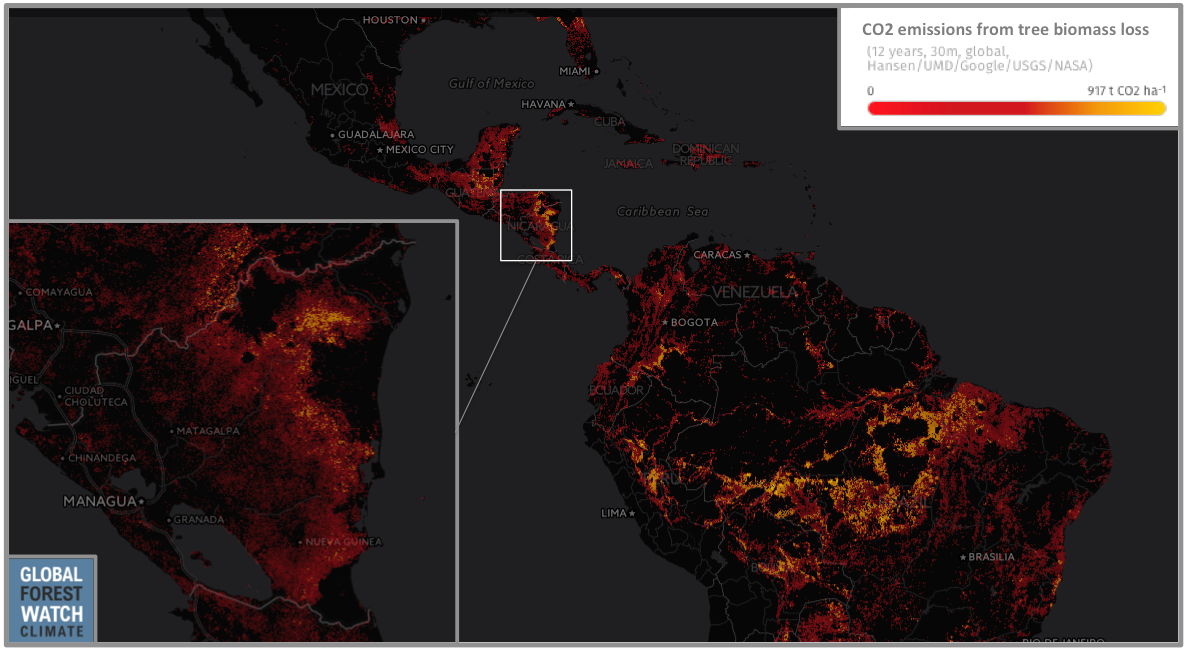- The report, produced by the World Resources Institute, finds big financial rewards for restoration.
- Landowners could increase their incomes by using restoration to replenish agricultural yields and bolster food security, sell forest products, and earn money from ecotourism.
- Restoration could also have big rewards in terms of carbon storage, with WRI researchers estimating 5 billion metric tons of CO2 could be sequestered over 50 years if 20 million hectares is restored.
Land that has been degraded by human activity comprises around 20 percent of the forest and agricultural land in Latin America and the Caribbean. Such areas have attracted conservation attention, with programs aimed at restoration. Now, a recent report finds that restoring degraded land could bring billions of dollars in revenue to the region while also reducing CO2 emissions.
The report was produced by the World Resources Institute (WRI) and points to logging, overgrazing, and crop cultivation as major drivers of land degradation. The report builds on WRI’s earlier findings that 650 million hectares of land are suitable for restoration across Latin America and the Caribbean. This amounts to an area of land twice the size of Argentina.
The report finds that the restoration of even 20 million hectares of this degraded land could bring in $23 billion. WRI chose to focus on that number in pursuit of Initiative 20×20, a multinational effort to restore 20 million hectares in Latin America by 2020.
“Degraded, unproductive land is a drag on local farmers and national economies alike,” Walter Vergara, Senior Fellow at WRI and lead author of the report, said in a statement. “But it also represents a tremendous opportunity. WRI’s economic analysis of restoration shows for the first time that if we can bring productivity back to underperforming land, restoration not only pays for itself, but it creates billions of dollars of additional value, brings in environmental co-benefits and represents a major opportunity for carbon storage and therefore to efforts in climate change mitigation.”

Specifically, the authors list three restoration paths toward this goal: restoration via planting native species, assisted regeneration of forests, and agroforestry – the practice of growing crops within forested areas.
This, the authors write, could bring in about $1,140 per hectare for landowners from increased agricultural productivity, the sale of forest products, and ecotourism. The report also says improved land quality will also mean better food security and, thus, lower agricultural insurance premiums.
“As landowners, we have a responsibility to sustainably manage our property, and this report shows that as business people we also have good financial reasons to do so,” Eric Poncon, owner of Morgan’s Rock Hacienda and Ecolodge in Playa Ocotal State, Nicaragua, said in a statement. “Since we opened our 4,000 acre property, we’ve designated half of it as a private reserve and planted more than two million trees. We’ve benefited from increasing tourism, used the products from our farms, and we will soon see benefits from our sustainable forestry operations.”
The economic case for restoration is already being recognized by investors, both public and private, who have pledged millions of dollars in funding to restore degraded land.
“Restoration is not just good environmental policy ¾ it makes good business sense. That’s why we’ve earmarked at least $70 million to support restoration across farmlands, pastures and forests across Latin America,” Juan Carlos Aybar, Director of the impact investment firm Latin America for Althelia, said in a statement. “We expect substantial social and environmental benefits from our work in Peru, Guatemala and Brazil, but we also know that this is a smart financial investment for our firm.”
And then there’s carbon. As highlighted during the climate summit in Paris in December 2015, land degradation such as deforestation is one of the biggest sources of CO2 emissions. Because of this, preventing deforestation and restoring land that has already been degraded featured prominently in the resultant Paris Agreement, with many of the world’s countries pledging to stem their emissions.

Studies estimate that around 56 percent of Latin America’s total emissions come from land use and land-use change. In their report, WRI pegs the amount of CO2 sequestered by restoring 20 million hectares at 5 billion metric tons over 50 years.
“This analysis shows why restoration is one of the most cost-effective ways for Latin America to address climate change and prepare for its impacts,” Carlos Nobre, Scientific Director and Dean of Brazilian Climate Studies at Brazil’s Institute of Science and Technology for Climate Change, said in a statement. “By restoring Latin America’s vast forests and improving agricultural practices, we can pull carbon from the atmosphere into soils and vegetation where it can enrich the land and generate substantial economic benefits.”
Disclaimer: Mongabay receives funding from the World Resources Institute (WRI). However, WRI has no editorial input as to Mongabay content.
